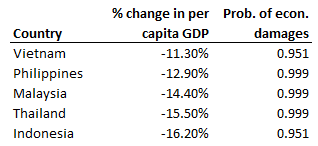Infrastructure
/WE WANT THE RANKS TO GO DOWN (#1 IS THE BEST) AND THE SCORES TO GO UP (5.0 IS THE HIGHEST). SOURCE: WORLD BANK
Infrastructure. Vietnam needs it. Train is not good. Roads aren’t great. No metros. Airports at capacity. Big transport expressways to other countries not great. But this should soon change, at least in the south.
The government is proposing a new road from HCMC to the Cambodian border. At a cost of $459 million, hopefully funded by the private sector in a public-private partnership (PPP). The provinces will pay for the land clearances which are 28% of the total cost. The overall cost is $8.6 million per kilometer (including land clearance, $6.2m without). Recently, construction on an expressway in the north (from the Van Don Economic Zone to Mong Cai) began, also funded by a PPP. That will cost $6.1 million per kilometer, but I am not sure if it includes land clearance, and even if it does, land probably costs less there than around HCMC.
2018 RANKINGS. SOURCE: WORLD BANK
At some point, I want to look at road construction cost in different countries. That’s on my list.
I have been hearing that transport is a real bottleneck for Vietnam. So I wanted to do a little work on where the country is, in terms of infrastructure. I found this Logistic Performance Index (LPI). It is an index created by the World Bank to see how countries are doing in terms of trade logistics.
Where does Vietnam stand? Well, they aren’t that bad and are improving. Hitting well above their weight. The country is something like 159th in terms of GDP per capita, but is 39 on this LPI. Infrastructure is a bit worse than that with a rank of 47th overall, but that’s still not bad, well into the top third. And Vietnam was as low as 64th in the world but has been consistently in the mid-50s for overall and high-60s on infrastructure.
Among its ASEAN siblings, it is ranked very well, better than all except Thailand. On infrastructure specifically, it is a bit worse than both Thailand and Malaysia, but just a bit. I can’t help think that Singapore pulls Malaysia up a bit. Singapore is ranked 7th in the world. Among low-income countries it is the best.
What needs improving? Well, lots of stuff. But according to a survey of logistics professionals, rail needs the most improvement, then roads and warehousing. Ports are alright, airports a bit better and telecom and IT pretty good. And in terms of improvement, 70% of respondents say that trade and transport infrastructure has improved. (See 2018 survey results below).
So while there needs to be big investment in infrastructure, Vietnam is actually doing pretty well. If it continues to want to compete, it probably needs to do even more investment. These PPP projects are probably a good way to help sidestep some of the capex, in the near term.
FOR 2018 LPI REPORT. NOTE: “FOR THIS MEASURE, SURVEYED LOGISTICS PROFESSIONALS ASSESS THE LOGISTICS ENVIRONMENTS IN THEIR OWN COUNTRIES.” SOURCE: WORLD BANK
































